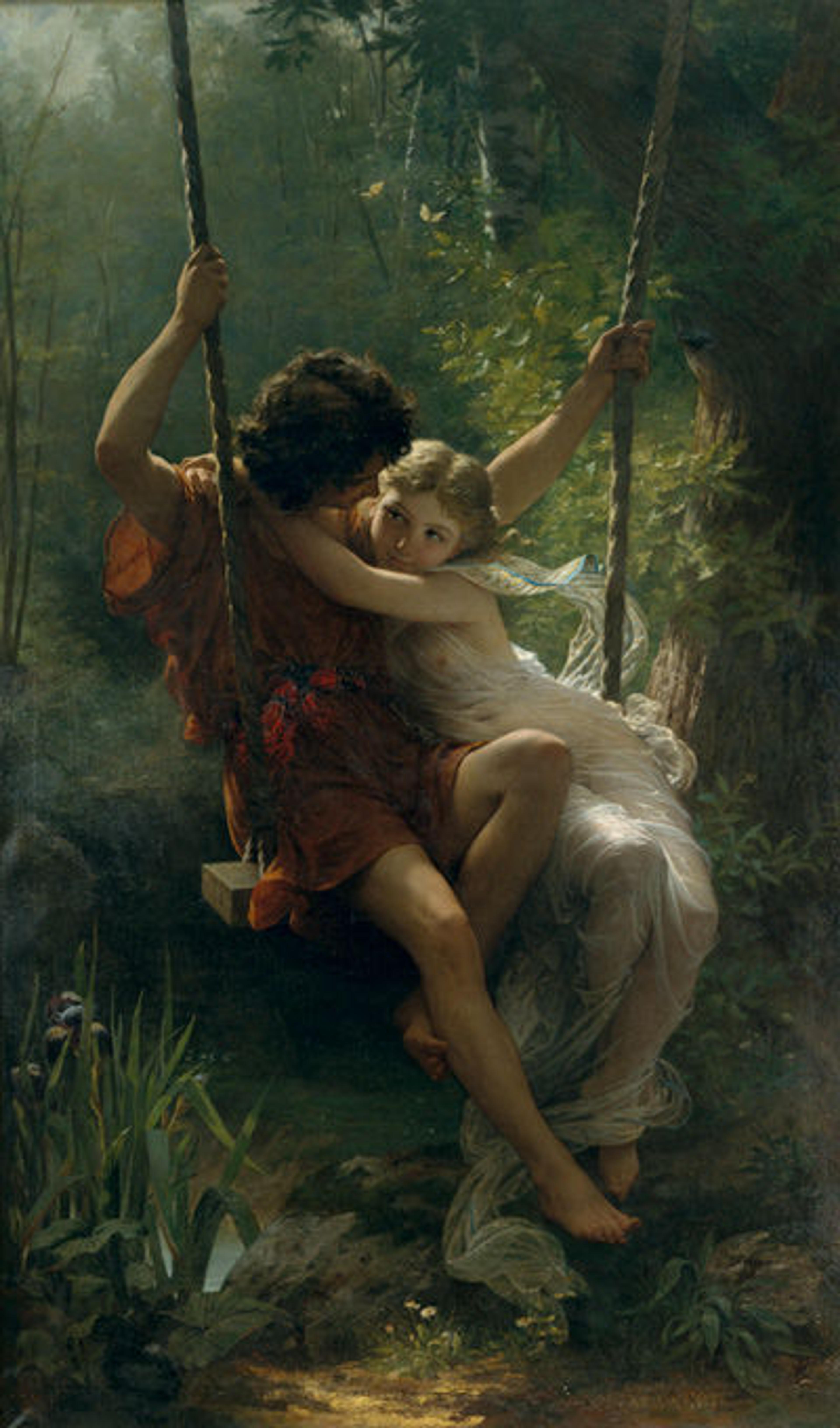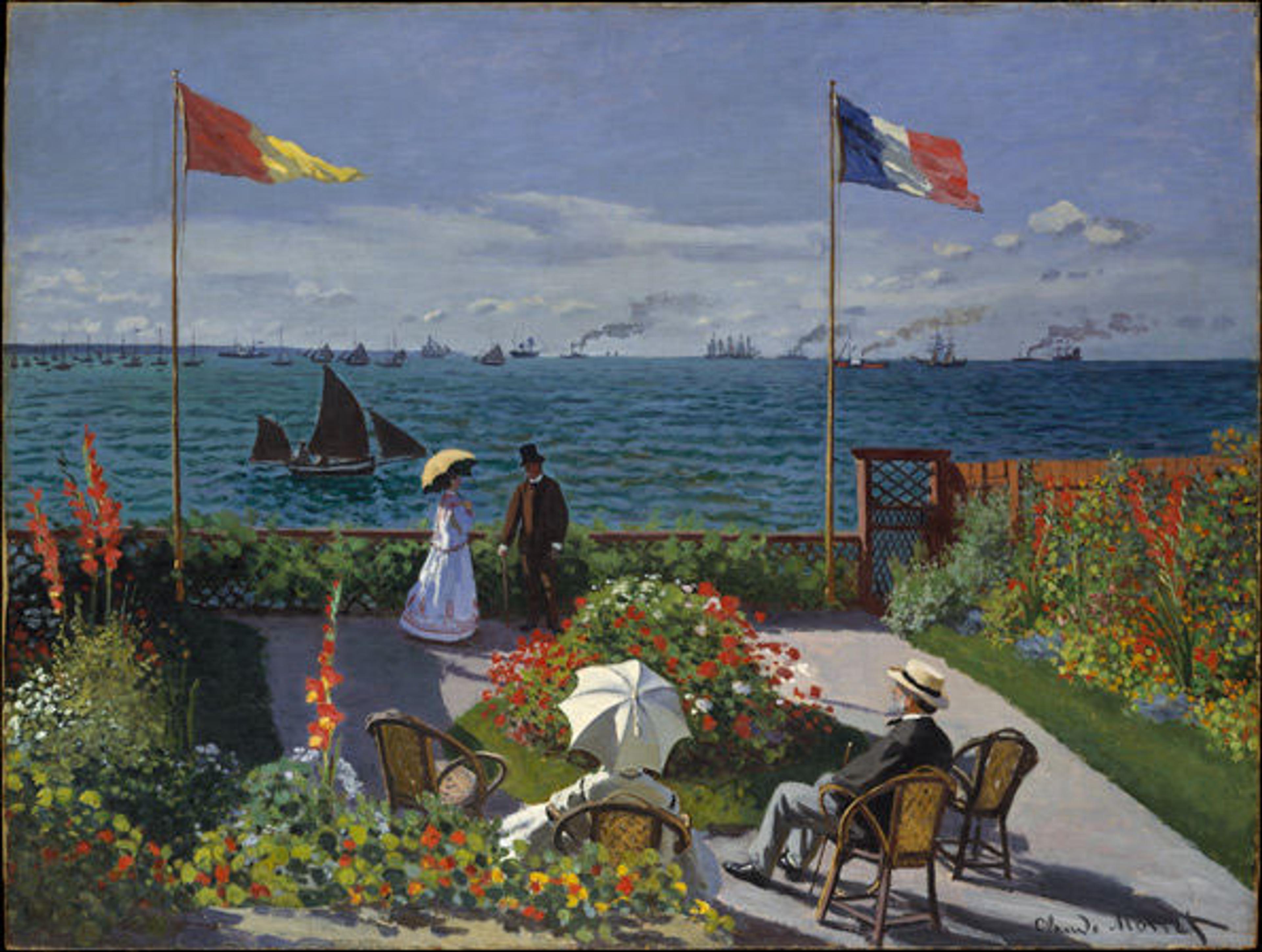
Pierre-Auguste Cot (French, 1837–1883). Springtime, 1873. Oil on canvas; 84 x 50 in. (213.4 x 127 cm). The Metropolitan Museum of Art, New York, Gift of Steven and Alexandra Cohen, 2012 (2012.575)
«Sweet, elegant, loving, beauty: these are the words that come to mind when I look at Springtime by Pierre-Auguste Cot. After hearing one of our amazing educators, Kathy Galitz, speak about it, though, I have a new feeling about what this and the other pieces in gallery 827 represent.» According to academic masters at the time, Cot's painting was an "ideal" work. As Kathy explained, however, academically trained artists like Cot were the precursors to the Impressionist painters: the ultimate Salon rejects, whose style took painting in a whole new direction.
As you travel to the Impressionism galleries just a few steps away from gallery 827, you will find some of these rejected works, which bear a literal stamp of disapproval—a large R stamped on their backs by the French Royal Academy. Impressionist painters, the newbies of the art world, felt that painting lifesize, idealized women was no longer necessary. They knew that diverting from traditional subject matter would be the ultimate sin in the eyes of the masters. However, the world was captivated by the dreamlike work of these painters.

Claude Monet (French, 1840–1926). Garden at Sainte-Adresse, 1867. Oil on canvas; 38 5/8 x 51 1/8 in. (98.1 x 129.9 cm). The Metropolitan Museum of Art, New York, Purchase, special contributions and funds given or bequeathed by friends of the Museum, 1967 (67.241)
As a young girl, I always thought a particular one of these pieces, Claude Monet's Garden at Sainte-Adresse, was the epitome of art. I am sure the old masters would have been very angered to hear that. Little did they know that Impressionism would become one of the best-loved art movements and the one to inspire artists for generations, including young artists like us.
Related Link
Heilbrunn Timeline of Art History: "Impressionism: Art and Modernity"